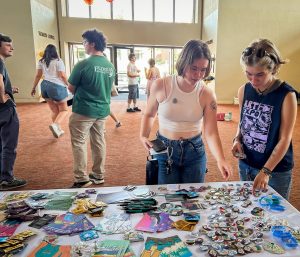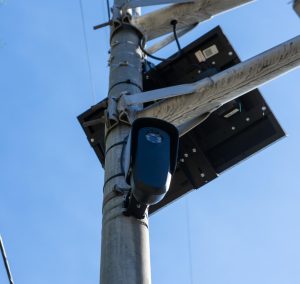Making Whitman White again
September 15, 2022
Writer’s note to the Reader: I believe SWA-NA (Southwest Asia, North Africa) is more appropriate variation of MENA, since it describes the peoples in that region in terms of their geographical habitat instead of using a political term that was coined by colonizing powers. However, in this article I will use MENA, since it is the “official” categorization.
Removing or leaving out the MENA category from Whitman’s racial/ethnic categories is the easy way out; it is a tool to keep Whitman “whiter.” It is a tool that prevents confronting racial/cultural ignorance within our campus and administration. It isolates and otherizes MENA students, faculty and staff, causing constant identity erasure and confusion.
According to the U.S. Census and Whitman College, if you belong to the MENA (Middle East, North-Africa) region, you are classified as White. Regardless of who you are, be it faculty, staff or student, you are considered “White” in any documented racial or ethnic category at Whitman.
This blatant identity erasure distorts the facts about diversity and representation on campus, causes unwanted stressful experiences and widens the gap of inequity at Whitman.
First, in the Whitman Enrollment Report, the percentage of White students would be skewed. Generally, any MENA student is immediately classified as White unless they self-report as ‘Other’, which students very rarely do. You might wonder, “why can’t they just check ‘Other’ or ‘Unknown’?”
According to the U.S. Census, a White person is having origins in any of the original peoples of Europe, the Middle East or North Africa. Hence, when you are a first-year student who just came to Whitman College and have to do the self-reporting, you would see that definition in front of you and you might feel you are “doing something wrong” or “might cause problems” if you don’t choose White. I have, along with other MENA folks on campus, regretfully put “White” as my racial identifier. In addition, always checking “Other” is unpleasant and, frankly, othering. Not only is your identity being erased by your institution, but you are also effectively othering yourself every time you are asked to fill out a form.
Second, diversity-based community and recruitment programs do not bother to focus on MENA folks. Whitman isn’t specifically seeking those voices and experiences of MENA folks, be it visiting speakers, hiring visiting professors or highlights on school publications. Ironically, the Department of State acknowledges April as the Arab-American Month, but we hardly receive any publication from “Whitman Today” about Arab heritage compared to other heritages on campus. Yes, MENA doesn’t equal Arab, but Arab is part of MENA.
Finally, lack of representation means a massive misunderstanding of the MENA identity. Thanks to colonizing forces – Europeans, Arabs, Egyptians, etc. – and due to the prevalence of the slave-trade, the original peoples (who were not White!) engaged in many interracial relationships, leading to a huge racial diversity. Therefore, a MENA person can be MENA and White, MENA and Black, or just MENA. MENA isn’t White, isn’t bi-racial or mixed and isn’t Other! MENA is MENA first, and then it can be other things too.
Now, given that your institution has failed you as a MENA individual on campus, you are tasked with the mission of doing all the representation and inclusion work. You have to take on the responsibility of representing your heritage and educating those who are not very culturally inclusive. Otherwise, you must simply accept that your institution doesn’t acknowledge your heritage and endure all the emotional baggage that comes with it.
Therefore, dear Whitman, I urge you to do the following:
- Transcend the limitations of the U.S. Census, and acknowledge the flaws within your self-identification process. If you are legally bound to follow the U.S. Census for federally-funded programs, then follow it, but also make your own inclusive version to avoid excluding others. A lot of other places have done it before. Have the more inclusive document as a resource for your community, diversity task-force and prospective students and friends.
- Uphold your commitment to diversity and inclusion by taking corrective actions to represent the MENA heritage and the MENA people throughout speaker invitations, communication channels, programs, events and task forces. Students are not responsible for doing the work for you.
- Add the MENA, or SWANA, category to your documents.







Josh • Oct 12, 2022 at 2:13 am
Why would Whitman possibly have any incentive to downplay its racial diversity? Could there maybe be a different motivation behind this, or is the only thing that guides every institution on earth “racism”?
Julie Carter • Sep 15, 2022 at 9:58 pm
Great points! Making those changes would really demonstrate that the school is truly interested in diversity.